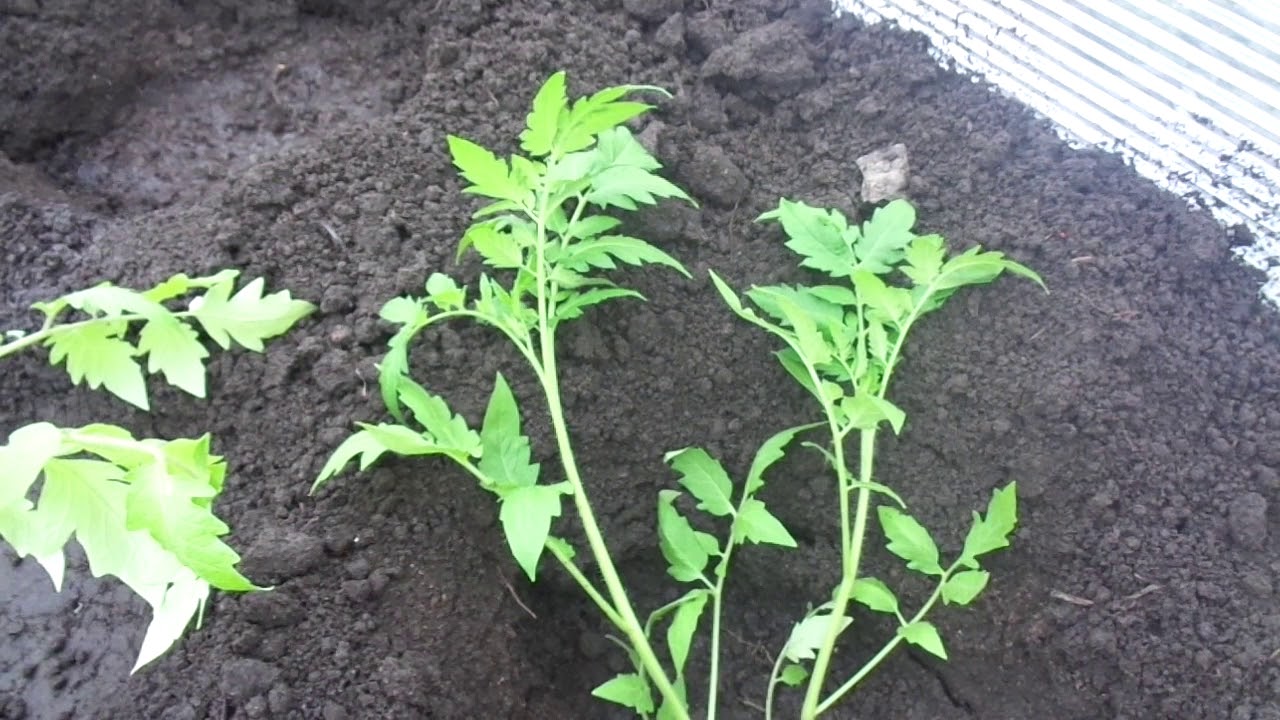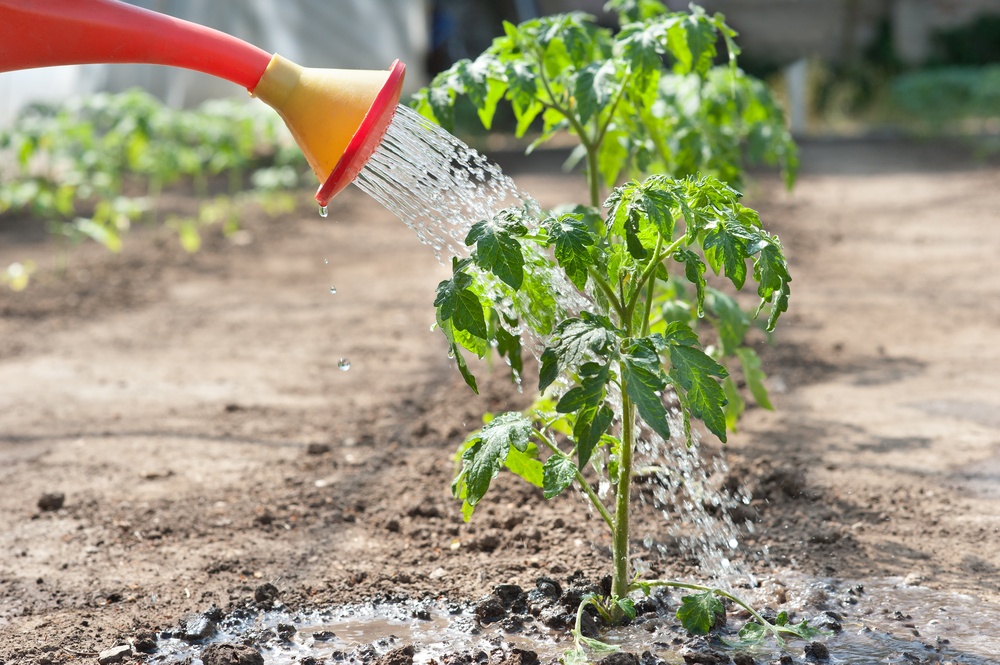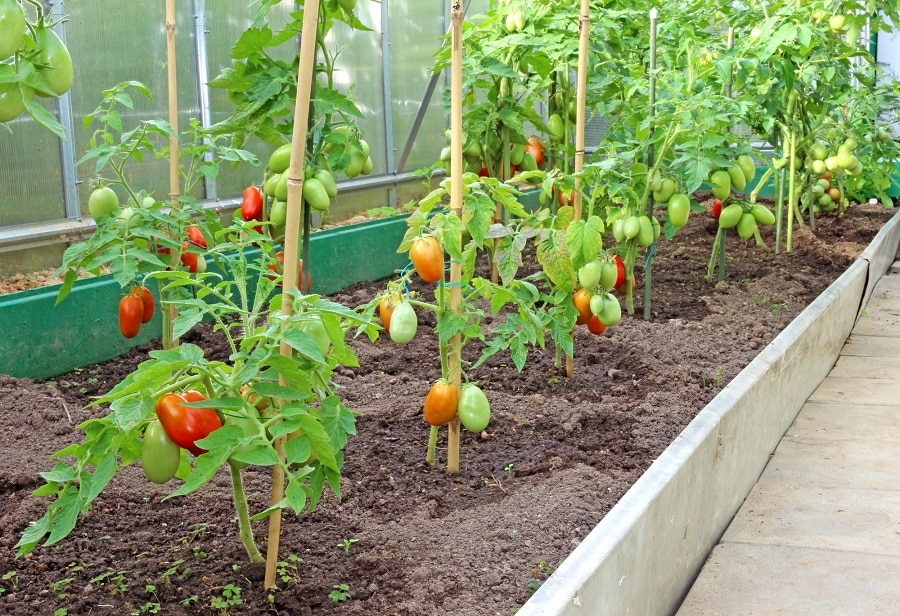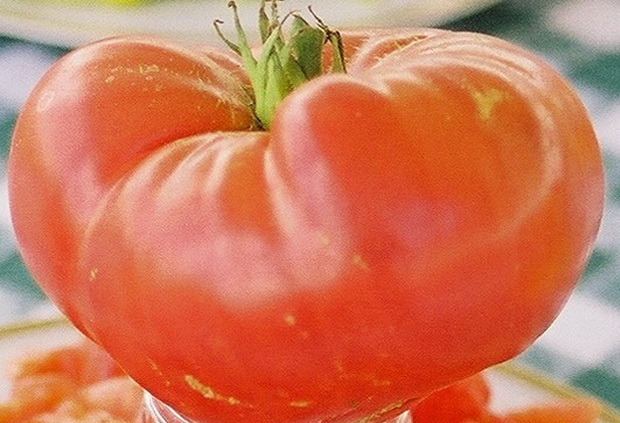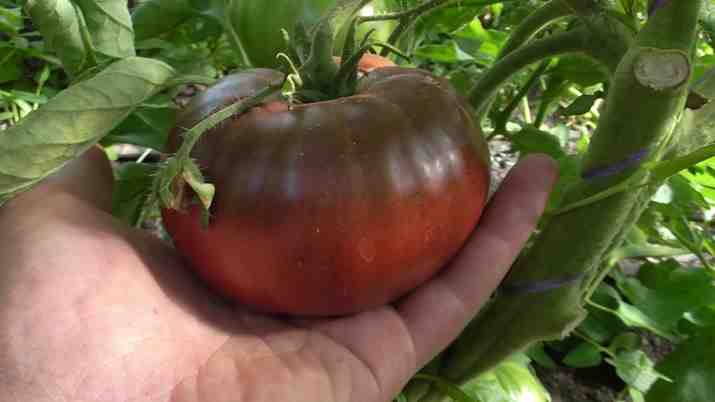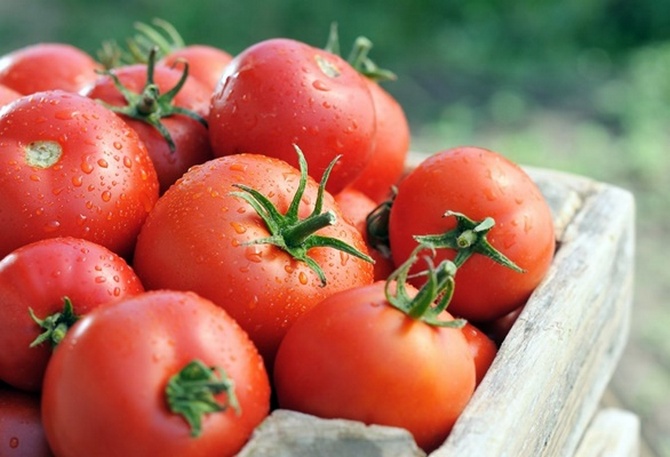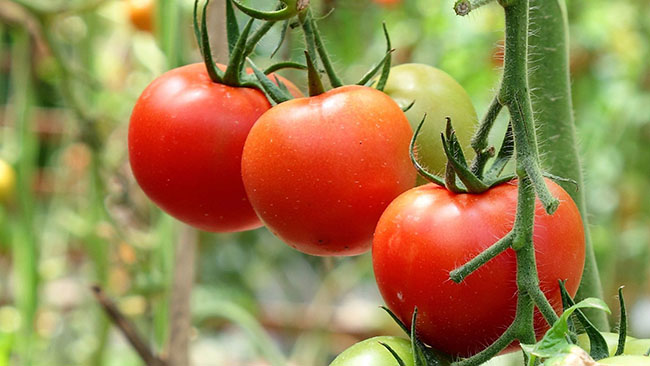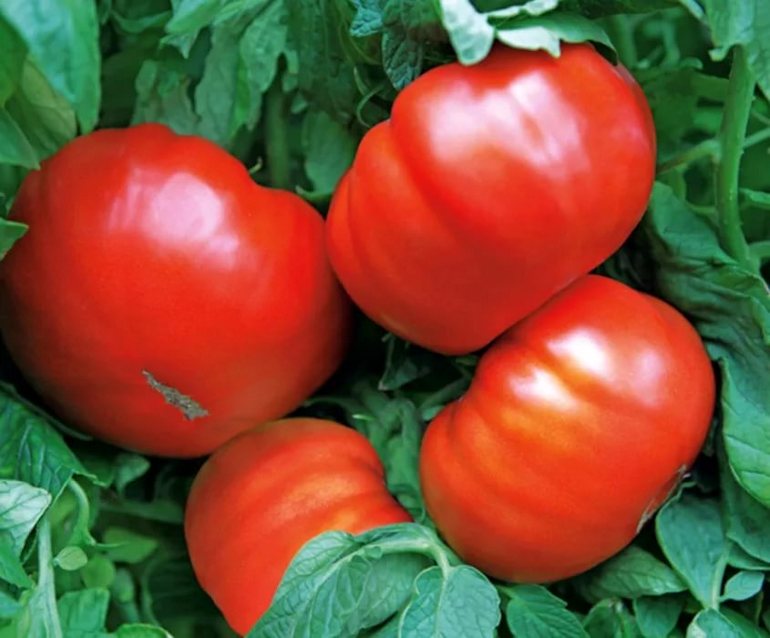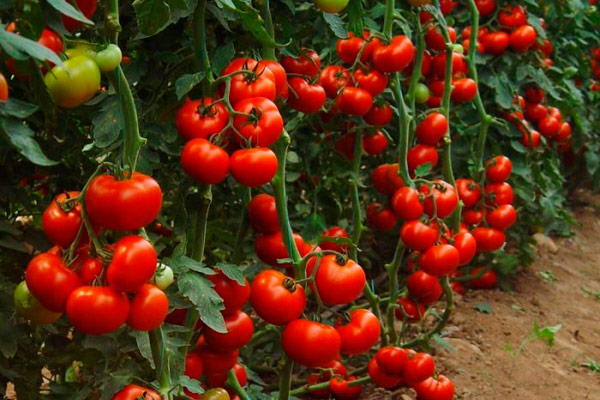Content:
The German variety Strauch is one of the rarest and most expensive varieties of tomatoes. At the same time, the variety is quite popular both in Germany and in Russia. Refers to medium early (100 days from sowing to harvest) and medium-sized varieties. Strauch is a multiple winner of various exhibitions, which is why the whole of Germany is proud of him.
Description of the variety tomato Strauch
Round bright red tomatoes weigh on average from 50 to 100 g. Their surface is even and smooth, and the flesh is fleshy and sweet in taste. The fruits are suitable for whole-fruit canning - in general, this variety was bred specifically for him. Tomatoes are quite dense in consistency, so they are not damaged during transportation, due to which they can be safely transported where needed.
One package contains only 10 seeds. Each bunch of a bush with a height of 1-1.5 m (but it happens that Strauch grows up to 2 m) contains about 18 fruits. One bush can produce up to 120-130 tomatoes.
Growing seedlings
For seedlings, use plastic containers with drainage holes at the bottom. In the place of planting seedlings, it is necessary to provide adequate ventilation, lighting, and the absence of temperature extremes. A mixture of peat and sand, pre-moistened and taken in equal proportions, is suitable as a substrate.
Before placing seeds in the substrate, you need to prepare them in a special way for disinfection, growth acceleration and quality improvement. The first step is to warm the seeds. During the first 48 hours, keep at a temperature of about +30 ° С, for the next 72 hours - at + 50 ° С.
At the end of the soaking procedure, the seeds must be thoroughly rinsed. Immediately after sowing the seeds, the bed is covered with a film so that the moisture of the substrate is maintained at the proper level. After the first shoots appear, the film is removed (it is advisable to remove it in the afternoon).
Before the first shoots, the temperature should not rise above +23 ° C. When the first shoots appear, they must be hardened, for which the temperature is reduced to + 10 ° C and maintained at this level for the first 3 days.
Water the seedlings sparingly. preferably from a spray bottle with a fine spray, so that the risk of flooding them with water is reduced to a minimum.
Seedlings, which have already turned 50 days old, are ready for transplanting to a permanent place. Before planting, make sure each plant has at least 5 leaves.
Landing in the ground
Tomatoes can be planted in the first 10 days of June. To protect the plant from frost, you need to plant it only when stable warm weather is established.
To prevent seedlings from withering at the most inopportune moment, it is advisable to cook them several hours before planting.
Before planting tomatoes on the site, you need to dig holes for seedlings. Each dug hole is poured with 1 liter of water, and after planting the seedlings, it is again watered and sprinkled with earth. The distance between the rows and between plants in one row should be kept 30-50 cm.
The roots are carefully enveloped in earth and rush to the very bottom of the hole. To improve the growth of tomatoes, when planting, you can deepen the seedlings to the middle of the stem, having previously torn off unnecessary leaves. When planting, the bushes are slightly inclined to the northwest.
Watering
Tomatoes of any variety are quite hygrophilous. Ideal for them is 90% soil moisture and 50% - air. The lack of moisture becomes immediately noticeable - the leaves sag, the buds curl. However, an excessive amount of moisture leads to the fact that the thin skin of the fruit cannot withstand the pressure and cracks. Therefore, it is extremely important to be able to correctly calculate the amount of water for irrigation in order to grow fruits healthy, strong and whole.
Water for irrigation is taken warm, ideally its temperature should coincide with the temperature of the soil. Cold water can cause the leaves to turn yellow. The amount is calculated approximately in the proportion of about 5 liters per one tomato bush - this is the only way the root system of plants can be adequately saturated with moisture.
Freshly planted seedlings are watered abundantly once and left alone for 4 days. Then it needs to be watered 1-2 times a week, gradually moving from a volume of 2 liters per bush to 10 liters. Young bushes are watered at the very root in the hole, older plants already need to be watered in the grooves. In rainy weather, this procedure is not performed.
Care must be taken not to get water on the leaves of the plant. After watering, the soil must be loosened, otherwise a dry crust will form on its surface. It also contributes to better air flow to the plant roots. If it is possible to organize drip irrigation for plants, it is advisable to use it.
Top dressing
This is the second most important point of care after watering. You need to start feeding the plant 10 days after planting it in a permanent place. You can use as fertilizer:
- Nitrogen fertilizers. The most important thing is to avoid excess, otherwise the fruits will slowly ripen.
- Potash fertilizers - ash or potassium sulfate. But potassium chloride will only harm tomatoes.
- Trace elements - magnesium and boron. During flowering, boron will be especially relevant for tomatoes, since flowers often fall off from its lack. Just 1 spraying is enough to solve this problem. You need to take 1 g of boric acid per 1 liter of water.
- Organic fertilizers. Cow manure (1 bucket of manure is taken for 10 buckets of water), bird droppings.
Before flowering, 1 liter of top dressing is added for each plant, after flowering - 2 liters. In the process of feeding tomatoes, you need to water them.
Garter
Tying tomatoes is necessary so that they do not break under their own weight and are protected from diseases and pests. It also facilitates the process of watering, feeding and pinching. It is important to do this in a timely manner. There are 2 ways to tie:
- To the pegs. The most common, vertical garter. Next to each tomato bush from its northern side, a peg is driven in (20 cm higher than the bush), to which the plant stem must be carefully tied. The higher it is attached, the better, in accordance with the growth of the plant, it will need to be moved up. As a garter, you can take both self-prepared synthetic pieces of fabric and clamps sold in specialized stores. Boil the garter before use to avoid parasite infestation.
- For stretching or trellis. This is the horizontal way. This type of tying is suitable if a lot of tomatoes have been planted. On both sides of the bed, stakes are driven in, each about 5 cm wide, and a wire is pulled between them at a height of 2 m. Tomato bushes need to be tied to the stretched wire.
Pruning and pinning
In order for the crop to be plentiful, you need to correctly form the bushes: do pinching and pruning of tomatoes. The pinching procedure involves the removal of young lateral shoots of the plant, which are called stepchildren, and pruning - the removal of excess leaves.Since tomatoes are light-loving, shading caused by excessive greenery reduces their yield.
To remove the shoot, it is enough just to slightly pull it down with your hands - it will break without much resistance and fall off without harming the rest of the plant.
The pinching procedure allows you to regulate the growth of tomato bushes, both increasing and decreasing their length.
It is necessary to carry out pinching throughout the season, preferably in the morning.
Advantages and disadvantages of the Strauch variety
The main varietal advantage of Strauch is, of course, its complex resistance to most diseases that affect tomatoes, such as septoria, late blight, macrosporiosis, apical rot, and stolbur.
Another important positive characteristic of the variety is its unpretentiousness. Neither cool weather, nor inadequate watering, nor drought interfere with the growth and development of tomatoes, and the harvest is almost always plentiful and tasty.
The disadvantages include the price of seeds (they cost twice as much as most other varieties) and the complexity of their acquisition.

